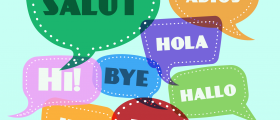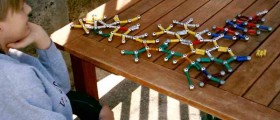
Down syndrome is a congenital conditionwhich manifests through a certain group of both physical andpsychological traits. Basically, Down syndrome stems from anadditional chromosome on the 21st pair. Due to thisreason, this condition is also referred to as trisomy 21.
One of the common characteristics ofthis health problem may be hearing impairment. If this is the case,in order for the affected individual to receive proper education andlearn how to manage all of the common life problems, learning a signlanguage is crucial.
Sign Language in Down Syndrome
Speech delay, among other healthproblems, commonly affects people with Down syndrome. So, in manycases of this condition, the affected individuals will get frustratedwhen they do not manage to lead a conversation with their caregiver.This can lead to quite difficult situations. Therefore, learning asign language and teaching your child the same is bound to bebeneficial.
Interestingly, many babies are capableof learning some signs of a sign language long before they master anyverbal skills. Thus, learning a sign language can open the doors ofcommunication between you and your baby on time, allowing you to planthe rest of his/her education timely.
Apart from using a sign language,specific vocalization, smiles or some gestures can also be used forcommunication, along with the picture boards and some other promptsof this type. The important factor is starting this form ofcommunication timely, helping your child learn the sign languageproperly, regardless of the type of this language used.
During this process, it is veryimportant to start simple and move up gradually. Namely, simplegestures or signs for basic words such as “eat”, “drink”,“sleep”, “milk”, “more” and some others should go first.Furthermore, focus on using the sign language as much as possible,motivating the child to do the same. This will help both of youmaster the language better and manage to obtain skills necessary fora successful communication earlier. During the signs you show, makesure you pronounce the word behind them too, this will help the childlearn how to communicate and establish connections between the verbaland the visual manifestations of a language.
Bear in mind that your child will learna sign better if you stand behind him/her and gently move his/herhands with yours, slowly forming it, allowing the child to performthe action on his/her own. Keep in mind that practice makes perfect and do your best to motivate the child to stay patient andinterested by staying positive and full of appraisal.
Teaching Tips for Professors
When being a teacher of a childsuffering from Down syndrome, you need to modify your approaches tothe class and the child, along with all the factors of classroommanagement you are used to, making all these skills optimal for theaffected student's learning experience. You need to be enthusiasticand encouraging at all times and focus on the current skills andneeds of your student, bearing in mind that gradually is the way togo with the learning schedule.
Secondly, make sure that the studentssits away from all possible distractions like windows, doors andnoisy places, allowing him/her an environment suitable for properconcentration and attention.
During the classes, if the student isnot capable of working in a class as a whole, focus on puttinghim/her into smaller groups, applying an adequate amount of 1-2-1instructions. The tasks you give need to be plain and simple in termsof explanation and description, being modifiable enough to allowthe child freedom to perform it in his/her own way. The studentshould be asked to repeat the task and instruction in his/her ownwords since this will allow you to see whether he/she understood theassignment or not.
Keep in mind that repetition andrevision of tasks will be necessary. So, do everythingto make sure that the student understood and performed the taskscorrectly. Sometimes, the process of giving adequate feedback maytake a bit longer, so be prepared for this and allow the necessarytime for a response. As soon as an correct answer is given, respondwith positive reinforcements. On the other hand, if the answer isincorrect, do not say so but, rather, ask the student to try againright away. Correcting mistakes immediately is better than doing thesame later.
Visual assistance in task performingand giving instructions is recommended. Thus, use highlight markers,pictures and other different prompts in order to make the taskabsolutely clear and understandable.
Finally, if certain tasks cannot beachieved in one way, be flexible enough to try a new, more effectiveapproach. For example, if the student cannot learn how to use a penfor writing, teach him/her the same skill by using a computer.
All in all, both sign language and manyother learning skills can be used for improving the classroomactivities of a student with Down syndrome.

















Your thoughts on this
Loading...